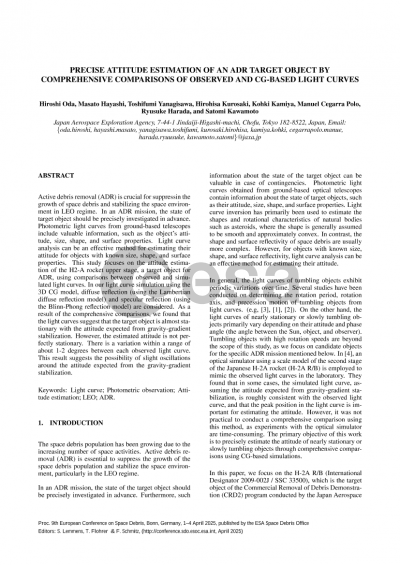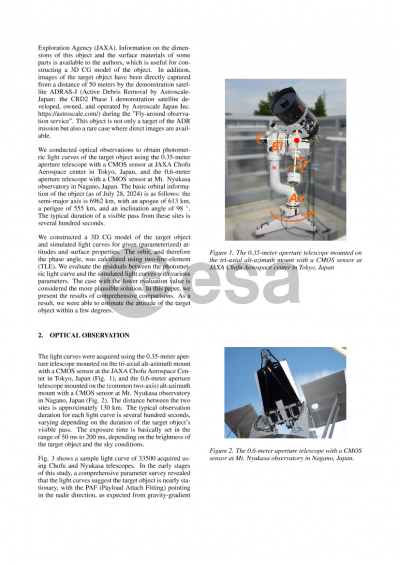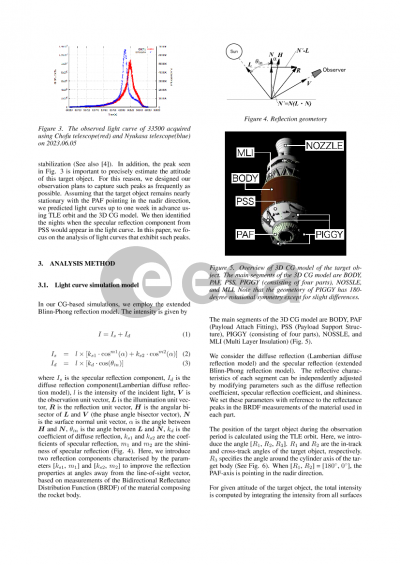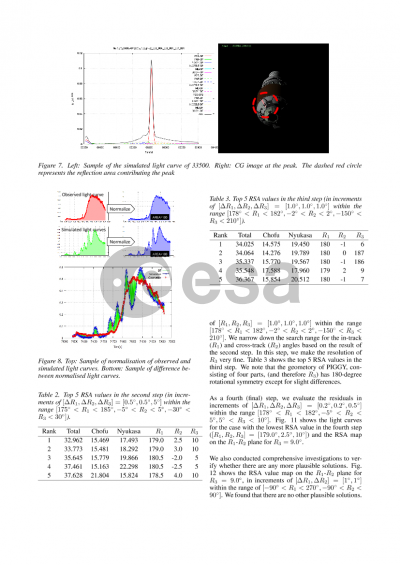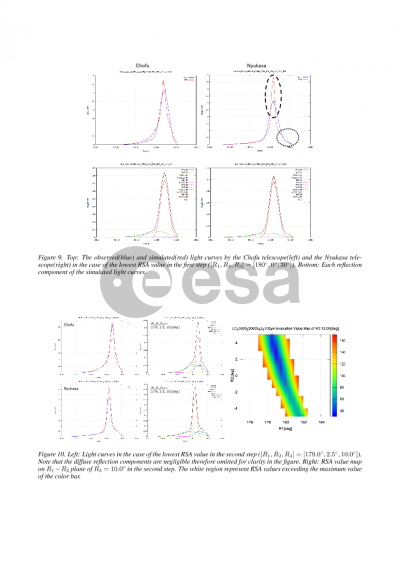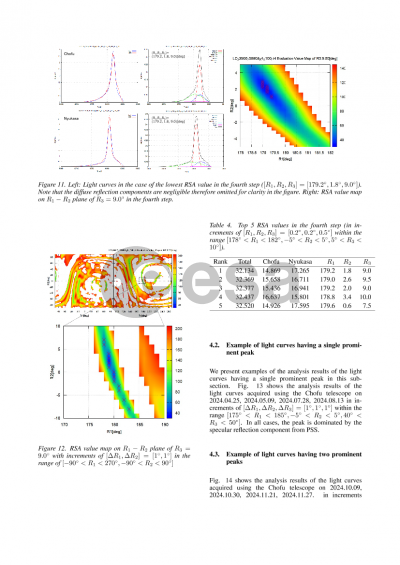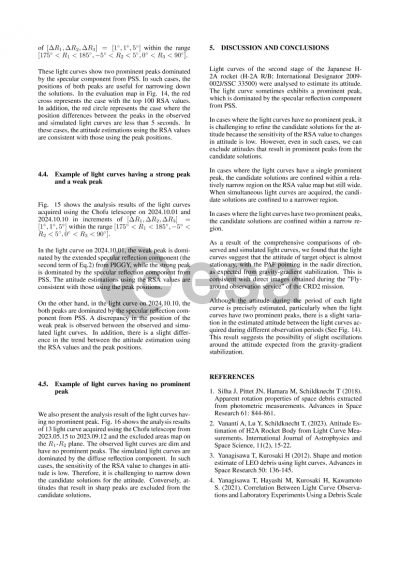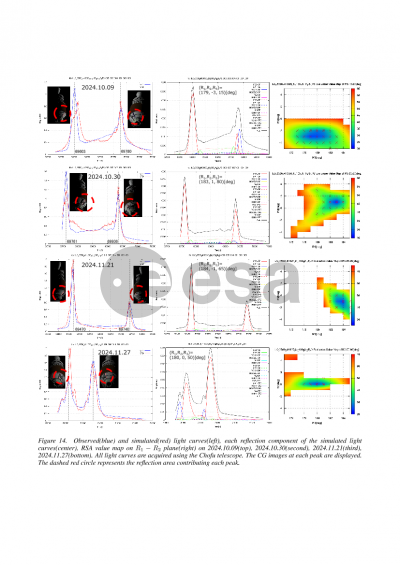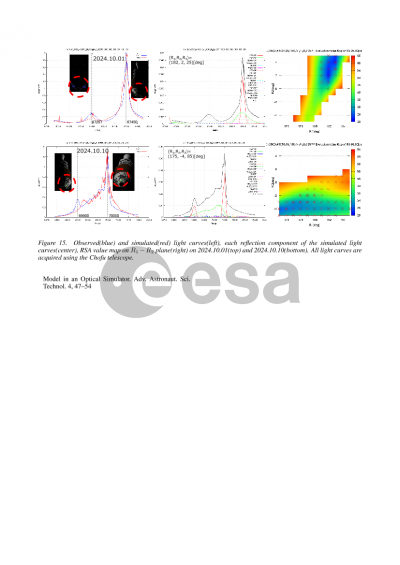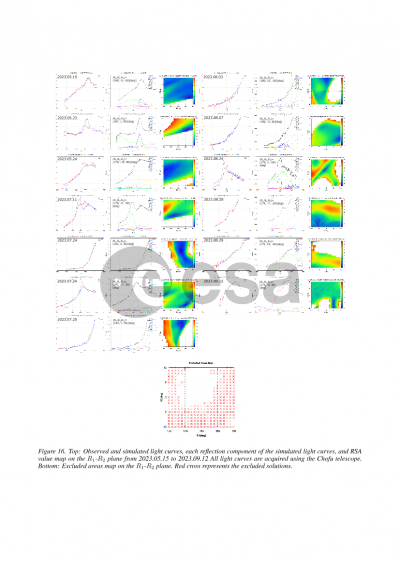Document details

Abstract
The active debris removal (ADR) is important to suppress the growth of space debris and stabilize the space environment in LEO regime. In an ADR mission, the state of target object should be precisely investigated in advance.
Photometric light curves obtained by ground-based optical telescopes contain information on the state of target objects such as attitude, size, shape and surface property. The analysis of the light curves can be an effective method, particularly for the estimation of the attitude of target objects whose information on size, shape and surface property is available.
We present results on the attitude estimation of a specific ADR target object in LEO (H2-A rocket upper stage, which is one of the ARD target candidates) based on comparisons between photometric light curves obtained by optical observations and light curves reproduced by CG-based simulations. As a result of comprehensive comparisons (parameter survey), we could estimate the attitude of the target object precisely (within a few degrees). In addition, this estimation is consistent with the direct images obtained during the "Fly-around observation service" of the Commercial Removal of Debris Demonstration (CRD2) mission conducted by JAXA.
We carried out optical observations to obtain the light curves of the target object using the 0.35-meter aperture telescope with a CMOS sensor at JAXA Chofu Aerospace center in Tokyo, Japan, and the 0.6-meter aperture telescope with a CMOS sensor at Mt. Nyukasa observatory in Nagano, Japan. The distance between two sites is about 130 km. The typical observation time of each light curve is several hundred seconds, which varies depending on the duration time of visible pass of target object.
In our CG-based simulations, the 3D CG model consists of six segments, BODY, PAF, PSS, PIGGY, NOSSLE, and MLI considering the diffuse reflection (Lambertian diffuse reflection model) and the specular reflection (Blinn-Phong reflection model). The reflective characteristics of each segment can be independently set by adjusting parameters (the diffuse reflection constant, the specular reflection constant and the shininess).
We evaluate the residuals between the observed light curve and the simulated light curves with various attitudes. The case with the lower evaluation value is considered as the more plausible solution. The uncertainty of an estimation is low in the case of the light curve having a sharp peak, in which the specular reflection component from the PSS is dominant. On the other hand, in the case of the light curve without such a sharp peak, the uncertainty is high.
As a result of comprehensive parameter survey, we found that the light curves suggest that the target object is almost stationary with the PAF pointing in the nadir direction as expected from the gravity-gradient stabilization. We note that the PAF-axis is not exactly stationary but slightly deviates from the nadir direction. There exists a variation within a range of about 1-2 degrees between each observed light curve. We also touch on the effectiveness of simultaneous multi-site observations for the attitude estimation. We could reduce the uncertainty by considering both light curves from the two observation sites (Nyukasa observatory and Chofu observatory).
Preview
